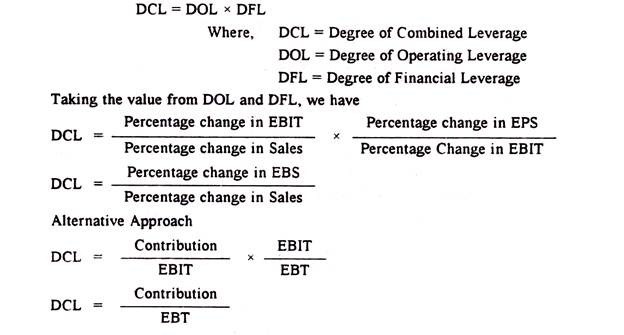Contents
The balance sheet always begins with assets, then liabilities and owner’s equity. Assets which are listed 昀椀rst are the most liquid, such as cash, accounts receivable and prepaid expenses. Liabilities are grouped by due date, with short-term liabilities listed 昀椀rst.

Together, the journal entries present a balanced, accurate, and objective statement of the business’ financial position. Enter the following transactions in the Purchase book of M/s Karun Electronics Ltd., for April 1997. Profit and Loss Account and Balance Sheet are the two basic financial statements, also known as final accounts, which are prepared from information given in the trial balance. Adjusting Entries are passed in the journal for unrecorded items like closing stock, depreciation of fixed stock outstanding and prepaid items. Adjusting entries are passed at the time of preparing the final accounts of the company. The Journal Proper in the accounting system can be defined as the book for the entry for the transactions done in credit and all of these usually are not entered in other books.
Golden rules of accounting
Then, the totals are written on the two sides opposite to one another. For the next period, the balance is entered on the credit side as “By Balance b/d”. In modern business, traders usually keep only a small amount of cash in the office for immediate requirements and deposit the remaining with banks.
Every account in the ledger has a name which is written at the top of the account. Accounts of artificial persons and body of persons e.g., partnership firm’s a/c, company’s a/c, bank a/c, club’s a/c, insurance company’s, etc. He received his masters in journalism from the London College of Communication. Therefore, making a comparative analysis with other periods would require the accountant or investor to take out the last 5 to 10 years of summaries. To provide information to the proper authority in time. The amount column is filled with the respective amount against the entry.

Hence, it becomes necessary to allocate a part of the purchasing cost or the acquisition cost to every accounting year until we use it. Explain the principal and concept of depreciation accounting. It is calculated by dividing the difference between an asset’s cost and its expected salvage value by the number of years it is expected to be used. Books of prime entry, as well as other key accounting skills and knowledge, are covered in more depth on ourAAT courses. The Trial Balance fails to assure that an agreed Trial Balance is free from all accounting errors.
Format of Journal
Purchase Return Book-It is a book which records all the return of credit purchases of goods of the company. Purchase Book-It is a book which records all the credit purchases of goods of the company. On December 31, year 1, the company will have to pay the bondholders $5,000 (0.05 × $100,000).
- Assume that the loan was created on January 1, 2018 and totally repaid by December 31, 2022, after five equal, annual payments.
- The proof of the equality of debit balances and credit balances is called a ‘Trial Balance’.
- Various types of subsidiary books are discussed below.
- Thus, the asset account is increased with a debit and the liabilities account is equally increased with a credit.
Temporary account balances can either be shifted directly to the retained earnings account or to an intermediate account known as the income summary account beforehand. Temporary accounts are used to record accounting activity during a specific period. For example, $100 in revenue this year does not count as $100 of revenue for next year, even if the company retained the funds for use in the next 12 months.
Balancing – The discount columns are totaled but not balanced. If the totals of the two sides are equal, the account is said to be in balance. Enter in journal folio column the number of the journal page from which the entry is being posted. Credit Amount In this column, amount to be credited is entered.
Chapter 4: Subsidiary Books, Ledger and Trial Balance
By this principle, the related revenue and expense should be recorded in the same time period. So for every debit, the matching debit should be recorded in the same accounting time period. So, the accounting time period should be defined clearly to adhere to this principle. Closing stock is not shown in the trial balance because this remains included with opening stock and purchase of the accounting year. Besides ledger balances, cash balance, and bank balance of cash book of that particular date are also included in the trial balance.

In other words, journal an original record while ledger is a derived record. JF column denotes the page number on which journal entry of this transaction has been recorded. On the basis of documentary evidences, the accountant makes a record of a transaction in journal in chronological order. The accounting process is a series of steps that begin with a transaction taking place and ends with closing of the account books at the end of the year. Because the complete sequence of accounting procedure is repeated in the same order during each accounting year, it is also referred to as accounting cycle. Check out Taxmann’s Financial Accounting which is a focused book on Financial Accounting for B.Com.
Rules for Debit and Credit
In the event of a loss for the period, the income summary account needs to be credited and retained earnings are reduced through a debit. Compound EntriesThese entries record more than one account to be credited or debited. Journalize the following after journalizing and posting the closing entries transactions, post them in the concerned ledger accounts and balance the accounts. The primary objective of financial accounting is to record financial transactions to arrive at the results of the operations of the business during a year.
After that, the journal entry is called an opening journal entry. Because all assets have a debit balance, so these are debited in an opening journal entry and all liabilities have a credit balance, hence these are credited in an opening journal entry. Trial Balance contains all ledger accounts, and provides a basis for further processing of accounting data i.e. preparation of financial statements. However, cash discount should not be confused with trade discount.
Instead of journalizing each entry, they are recorded into various subsidiary books. Think of your subsidiary book as sub-journals that record only one type of transaction. The rule of passing a journal entry is that the entry must have at least two accounts, with one debit and credit amount.
It’s like a photo taken on that day in the life of the company. The balance sheet changes everyday that new transactions are posted, so every day’s picture will be a little https://1investing.in/ different. One thing to remember is that such a system does not violate the rules of Double Entry System. We have still recorded the transactions according to this system.
Evaluating the finances of a company over fixed sections of time helps in making decisions based on its financial performance. Withdrawals owners and dividends decrease assets and owner’s equity. The purpose of accounting is to provide a means of recording, reporting, summarizing, and interpreting economic data. In order to do this, an accounting system must be designed. A system design serves the needs of users of accounting information. Once a system has been designed, reports can be issued and decisions based upon these reports are made for various departments.
Topic: Journal, ledger, and Trial balance (CONTINUE…)
The Income Summary will be closed with a debit for that amount and a credit to Retained Earnings or the owner’s capital account. If the Income Summary has a debit balance, the amount is the company’s net loss. Within the financial statement reports, the budget column displays the current or monthly budgets compared to actuals. Currently, the monthly budgets allows departments to spread their annual budget into 12 different buckets.